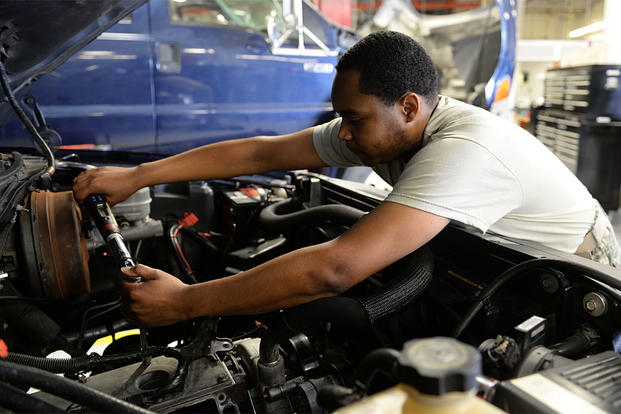Changing the Air Filter
The air filter setup on most diesels is the same as on gasoline-powered vehicles, with the filter located inside the cold air collector box located under the hood.
You have to take one big precaution when you change the air filter on a diesel: Always shut off the engine first. Diesel engines produce exceedingly powerful suction, and the air intake goes directly to the engine. Because almost anything can fly or drop into it — from nuts and bolts to your favorite hairpiece — you risk serious damage to the engine if you open the cold air collector box with the engine running.
Changing the Fuel Filters
Most diesels have two fuel filters: a "primary" filter located between the fuel tank and the engine, which cleans the fuel before it gets to the fuel transfer pump; and a "secondary" filter up near the engine, which gives the fuel a final cleaning before it gets to the fuel injectors. Both are usually easy to change, and your owner's manual should show you how to do this job. On some diesels, the job is much like changing the oil filter on a conventional vehicle: You unscrew the old one, moisten the gasket of the new one with fuel, and screw it into place. Others have filters with replaceable cartridges; you just remove the old one and pop in the new one.
Bleeding and Priming the Fuel System
When you change the fuel filter or run out of fuel in a diesel vehicle, you must bleed the air bubbles out of the fuel system and then prime it to get a new supply of fuel circulating. Cranking the engine does the job but also wears down the battery, so most diesels include a manual primer pump and an airbleedscrew for the purpose of bleeding the system and priming it. On many vehicles, you simply pump the primer's handle to get the fuel moving, andthen you turn the air-bleed screw until a hissing noise tells you that the air isescaping. Just keep pumping until all the air leaves and the noise ceases; thentighten the air-bleed screw and replace the pump handle.
Tip: Because bleeding and priming the fuel system is something that you may need to do fairly often, I suggest that you check the equipment and procedure for any model you're interested in purchasing to be sure that you can do this job quickly and easily.
Draining Water Separators
Diesel fuel can easily become contaminated by water because diesel fuel absorbs water more than gasoline does. For this reason, many diesel vehicles feature a gadget called a water separator that collects water from the fuel. It's usually located on or near the fuel filter. If your vehicle doesn't have one, I strongly suggest that you have one installed. The part shouldn't be terriblyexpensive, and it can save you a bunch of money on repairs.
Although a few water separators are self-cleaning, most need to be manually drained: You just turn a little drain valve called a petcock and empty the water from the collection chamber of the separator.
Tip: It's a good idea to check the water separator weekly at first to see how fast it fills up under normal conditions when you're driving on fuel from your usual source. If the fuel contains a lot of water, you may want to consider buying it elsewhere.
From Auto Repair for Dummies, copyright © 2009 by Wiley Publishing, Inc., Indianapolis, Indiana. Used by arrangement with John Wiley & Sons, Inc.






